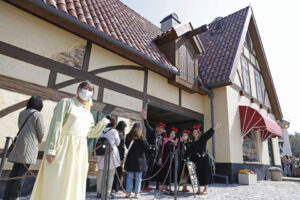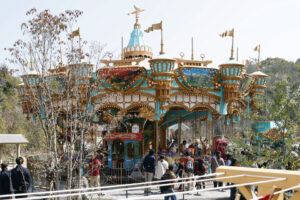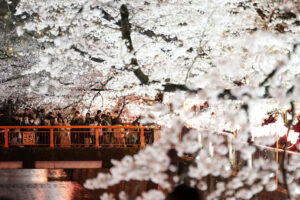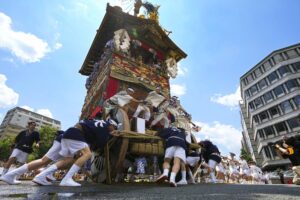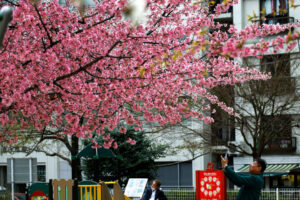Tokyo, 01 March, /AJMEDIA/
Tucked away in the forests of Mount Koshio, Oharano Shrine is a green retreat less than an hour away from Kyoto Station. Also known as Kyoto Kasuga, the shrine is a small piece of Nara in a Kyoto mountain suburb. The 83,000 square meter forest property offers gentle walking trails and a peaceful respite from the regular Kyoto crowds.
A Branch of Nara’s Famous Kasuga Taisha
In 784 AD the then Emperor, Kanmu, moved the capital from Nara to Nagaoka-kyo. There, his Empress consort, Fujiwara no Otomuro, established Oharano Shrine. It was a place to worship her clan’s deities, enshrined at Kasuga Taisha in Nara. The Fujiwara Clan’s deer motif can be seen in the buck and doe statues guarding the stairs to Oharano’s main shrine and the stone deer providing water to worshippers at the shrine’s basin.
Straight Out of a Painting
The approach to the shrine goes past a small soba restaurant that offers light meals and a great view of the scenic garden. The lily pond and bridge in the garden are said to be reminiscent of Monet’s Pond of Water Lilies painting. The pond is modeled after Sarusawa Pond in Nara.
The sacred grounds are connected to the surrounding area by forest trails. Exploring the serene property, it’s easy to understand why Fujiwara no Otomuro chose this location as her place of worship. The nature trail to the right of the main shrine winds through a leafy canopy before ending at a secluded bamboo grove at the edge of the property. The grove is much smaller than the one in Arashiyama but considerably less crowded. To the left of the main shrine, the trails go through dense forest to a paved path that leads to Shojiji Temple (Flower Temple) further up the mountain.




